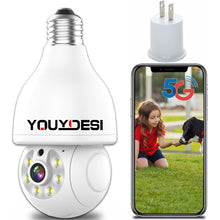2. Functional Disparities: Conventional cameras target specific subjects, often used with the subjects' knowledge and consent. Surveillance cameras, conversely, are primarily geared toward real-time monitoring, often in situations where subjects may be unaware or only partially informed of the surveillance.
3. Configurational Differences: Surveillance cameras possess distinct configurations to meet stringent security requirements. They typically feature higher resolutions and pixel counts compared to conventional cameras. Additionally, they may incorporate features like anti-glare, shock resistance, and night vision capabilities. The most significant advantage of surveillance cameras lies in their ability to accommodate additional software installations to cater to various security needs, including facial recognition, automatic tracking, filtering systems, and video storage compression.
4. Usage and Efficacy: The most profound difference between surveillance cameras and conventional cameras pertains to their usage and effectiveness. Surveillance cameras are engineered for remote, uninterrupted monitoring of targets over extended periods. Their adaptability to environmental conditions surpasses that of conventional cameras. Surveillance cameras frequently employ semiconductor imaging devices for their lenses, offering attributes such as high sensitivity, resilience against strong light, minimal distortion, compact dimensions, extended lifespan, and shock resistance.
Within the security and surveillance systems context, image generation primarily relies on CCD (Charge-Coupled Device) and CMOS (Complementary Metal-Oxide-Semiconductor) sensors. While there used to be a substantial discrepancy in image quality between CCD and CMOS, advancements in technology have significantly reduced this gap. CMOS sensors gain favor due to their lower manufacturing costs and reduced power consumption, rendering them prevalent in surveillance cameras.
Moreover, surveillance cameras excel in monitoring distance, angle coverage, and resistance to interference compared to conventional cameras. Customers can tailor surveillance cameras to accommodate various observation angles and distances, rendering them suitable for monitoring across diverse environmental conditions. They also feature night vision capabilities and operate effectively in low-light settings. Additionally, surveillance cameras offer both black-and-white and color monitoring modes, with the former delivering superior results for nighttime monitoring or tracking moving objects in low-light conditions.










